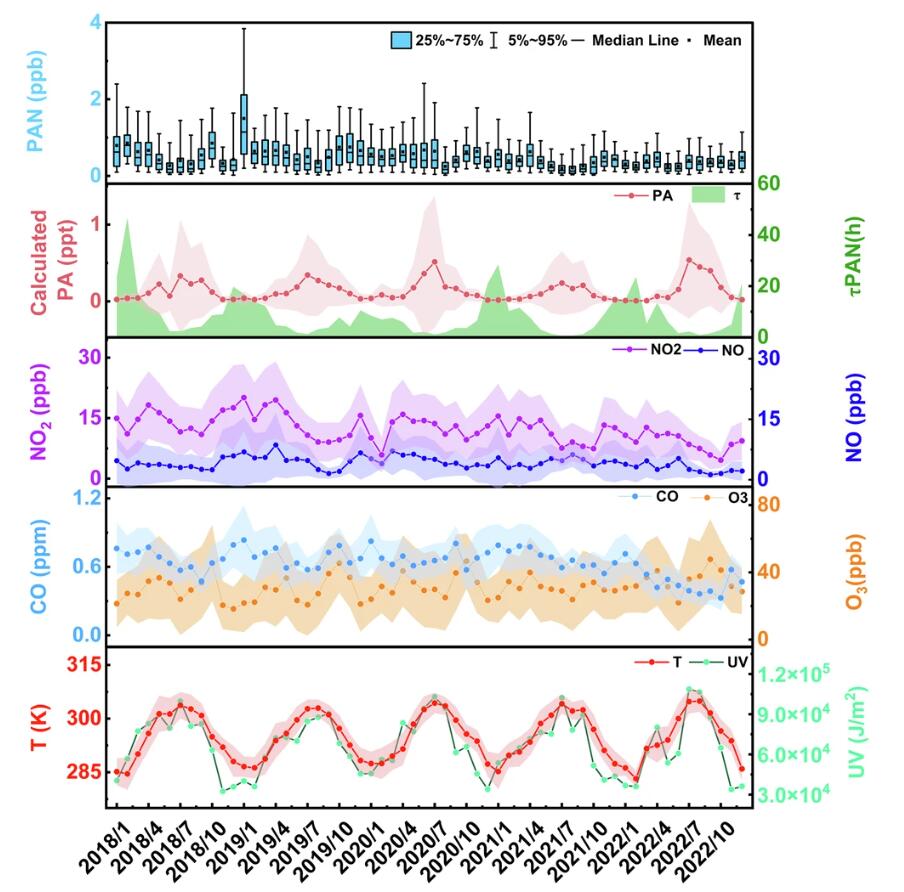

Peroxyacetyl nitrate (PAN) is an important photochemical product and affects ozone (O3) formation in the troposphere. Yet, the long-term observation of PAN remains scarce, limiting the full understanding of its impacts on photochemical pollution. Here, we observed PAN from 2018 to 2022 in urban Fuzhou, Southeastern China. We found that, in contrast to upward trend of O3, PAN concentrations shown a significant decreasing trend at an average rate of −0.07 ppb/year. NO2, CO, UVB, and T contributed to the decreasing trend of PAN according to Machine learning analyses, while the effect of O3-represented atmospheric oxidation capacity on PAN was fluctuating from year to year. Chemical box model revealed active PA production and depletion in Fuzhou. Thus, despite the decreasing PAN concentration, PAN chemistry effectively promoted O3 formation by rising ROx levels, leading to increases of 2.18%–58.4% in net O3 production rate in different years. Our results provide valuable insights into the evolution of photochemical pollution in urban environments.

Monthly mean values of PAN, PA, atmospheric lifetime (τ) of PAN, pollutants (NO2, NO, CO, O3) and photochemical condition (T, UV) during 2018–2022. Shade represents a standard deviation.